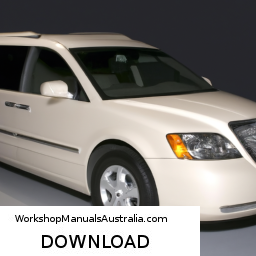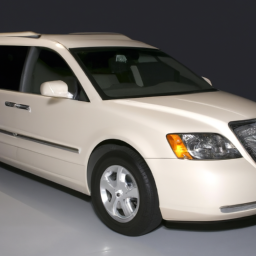
### Wheel Bearing Replacement on a Chrysler Voyager **Theory Behind Wheel Bearings:** Wheel bearings are crucial components that allow the wheels to rotate smoothly with minimal friction. click here for more details on the download manual…..
- How to Replace Front Struts 2008-16 Chrysler Town & Country Buy Now! New Suspension Kit from 1AAuto.com https://trq.video/ia-1ASFK02407 Loaded shock assemblies are a complete bolt-in …
- How to fix electrical issues with Dodge Caravan no radio no wipers no ac. Etc.
### Wheel Bearing Replacement on a Chrysler Voyager
**Theory Behind Wheel Bearings:**
Wheel bearings are crucial components that allow the wheels to rotate smoothly with minimal friction. They support the weight of the vehicle and help maintain proper alignment and stability. Over time, wheel bearings can wear out due to friction, moisture, and dirt, leading to noise and potential wheel failure.
**Symptoms of Worn Wheel Bearings:**
– Humming or grinding noise while driving.
– Vibration in the steering wheel.
– Uneven tire wear.
– Play in the wheel when lifted off the ground.
### Tools and Materials Needed:
1. **Tools:**
– Jack and jack stands
– Lug wrench
– Socket set (including deep sockets)
– Torque wrench
– Hammer
– Slide hammer (if necessary)
– Pliers
– Screwdrivers
– Bearing puller (if necessary)
– Grease (for new bearings)
2. **Parts:**
– New wheel bearings (set for each wheel)
– New seals (if applicable)
– New cotter pins (if applicable)
### Step-by-Step Replacement Process:
#### 1. **Preparation:**
– **Safety First:** Wear safety glasses and gloves.
– **Park the Vehicle:** Ensure the vehicle is on a flat surface. Engage the parking brake.
#### 2. **Lift the Vehicle:**
– Use the jack to lift the front or rear of the vehicle (depending on which wheel bearing you’re replacing).
– Secure the vehicle on jack stands for safety.
#### 3. **Remove the Wheel:**
– Use the lug wrench to loosen and remove the lug nuts.
– Take off the wheel and set it aside.
#### 4. **Access the Wheel Bearing:**
– **Remove the Brake Caliper:**
– Locate the caliper mounting bolts (usually two bolts).
– Use the appropriate socket to remove these bolts.
– Carefully hang the caliper (do not let it dangle by the brake line).
– **Remove the Brake Rotor:**
– If the rotor is held by screws, remove them with a screwdriver.
– Pull the rotor off the hub assembly.
#### 5. **Remove the Hub Assembly:**
– Locate the hub nut (usually a large nut in the center).
– Use a socket to remove the hub nut. Sometimes, a breaker bar is needed for extra leverage.
– If there’s a dust cap, gently pry it off with a screwdriver.
– **Remove the Hub:**
– If the hub is stuck, tap gently around its edges with a hammer or use a slide hammer to pull it out.
– Be cautious not to damage the axle or surrounding components.
#### 6. **Replace the Wheel Bearing:**
– **Remove Old Bearing:**
– Inspect how the old bearing is seated. Use a bearing puller if necessary to extract it from the hub assembly.
– **Install New Bearing:**
– Clean the hub assembly and ensure there are no remnants of the old bearing.
– Lubricate the new bearing with grease and press it into place. Use a hammer and a suitable tool (like a large socket) to gently tap it into position.
– Ensure it is seated evenly.
#### 7. **Reassemble the Hub:**
– Place the hub assembly back onto the axle.
– Reinstall the hub nut and torque it to the manufacturer’s specifications (check the service manual).
– Reinstall the dust cap if applicable.
#### 8. **Reattach the Brake Rotor and Caliper:**
and Caliper:**
– Slide the brake rotor back onto the hub.
– Reattach the brake caliper, making sure to tighten the mounting bolts securely.
#### 9. **Reinstall the Wheel:**
– Place the wheel back onto the hub.
– Hand-tighten the lug nuts and then use the lug wrench to tighten them in a star pattern for even pressure.
#### 10. **Lower the Vehicle:**
– Carefully lower the vehicle off the jack stands using the jack.
– Once on the ground, torque the lug nuts to the manufacturer’s specifications.
#### 11. **Test Drive:**
– Take the vehicle for a test drive to ensure everything is functioning correctly. Listen for any unusual noises.
### Conclusion:
Replacing the wheel bearing is essential to maintain the vehicle’s safety and performance. Regular maintenance can prevent premature wear. If you hear noises or experience handling issues, don’t hesitate to inspect and replace the wheel bearings as needed.
The side mirror, or side view mirror, is a crucial component of a vehicle, designed to provide the driver with a view of the areas adjacent to and behind the vehicle. This component is typically mounted on the exterior of the vehicle, on both the driver’s and passenger’s sides. The primary function of the side mirror is to enhance visibility and safety by allowing the driver to monitor blind spots, making lane changes and turns safer.
The side mirror consists of several parts: the mirror glass, housing, adjustment mechanism, and often an integrated turn signal. The mirror glass is usually convex, which expands the field of view, allowing the driver to see a larger area compared to a flat mirror. This curvature creates a slight distortion, which makes objects appear smaller and farther away than they are, a factor that drivers must consider when gauging distances.
The adjustment mechanism, which can be manual or powered, allows the driver to tilt or swivel the mirror to achieve the desired angle for optimal visibility. In powered mirrors, an electric motor interfaces with a switch inside the vehicle, allowing adjustments with minimal effort. Some modern vehicles feature heated mirrors that utilize a resistive heating element to prevent fogging or ice formation in cold weather.
In terms of physics, the operation of the side mirror is governed by principles of optics, particularly reflection and refraction. Light rays from objects behind the vehicle strike the surface of the mirror and reflect back to the driver’s eyes. The angle of incidence equals the angle of reflection, which is essential for the driver to accurately interpret the images seen in the mirror.
Moreover, side mirrors often include additional features like blind-spot monitoring systems that integrate sensors to detect vehicles in adjacent lanes. These systems interface with the vehicle’s electronic control unit (ECU), enhancing safety by providing visual or auditory alerts if a vehicle is in the blind spot. Thus, the side mirror is not only a simple reflective surface but a complex component that plays a significant role in vehicle safety and driver awareness.
Pets for adoption from Marshall County AL Animal Control With more adoptable pets than ever, we have an urgent need for pet adopters. Search for dogs, cats, and other available pets for adoption near you.
Marshall County Animal Shelter Marshall County Animal Shelter, located in Albertville, AL. An animal shelter for Cats, and Dogs. Showing the count and type of animals currently present at the shelter.
Animal Control | Albertville, AL The mission of Albertville Animal Control is to protect the health and safety of our residents and to protect animals and promote their humane treatment.
Animal Control – Marshall Co If you have lost a pet and would like to find out if your animal has been taken to a shelter, OR to view the adoptable dogs that the Marshall County Animal Control currently has available CLICK HERE!
Animal Control – marshallal.gov Marshall County Animal Control Spay and Neuter Application (printable) Marshall County Animal Control Adoption Application (fillable pdf) Standard Operating Procedures for Animal Control (Approved by the MCC for Public Comments Due by March 8 2023) To contact Marshall County Animal Control (256)582-4744 animalcontrol377@gmail.COM
Marshall County Animal Control – Dog shelter in Guntersville, AL … Looking for a shelter in Guntersville, AL? Adopt a dog or cat today! Search for local pets in need of a home. Adoptapet.com can help you find directions to your closest shelter and allows you to browse pets for adoption before you visit.
Animal Services in Marshall County, Alabama Impoundment facilities, shelters, animal control, cruelty officers, dog confinement requirements, access to public records, documents, sources and contacts for animal information in Marshall County.
Marshall County Al Animal Control in Guntersville, AL Marshall County Animal Control in Alabama is responsible for picking up stray pets. With the assistance of volunteers, these animals are posted online to help them find homes or rescues. It is important to note that Marshall County can only hold an animal for a maximum of seven days.
Marshall County AL Animal Control – Animal Shelter Adopt a pet from Marshall County AL Animal Control. Check out our available pets before visiting us in Guntersville, Alabama. Our friendly staff can help your family choose the perfect pet!
Animal Shelters – Marshall County, AL (Adoptions & Lost Pets) Albertville Animal Hospital: Trapp Ellen DVM 530 Alabama 75, Albertville, AL Boaz Animal Control 112 Broad Street, Boaz, AL CARAA at Arab Animal Shelter PO Box 522, Arab, AL Guntersville Animal Hospital 1609 Henry Street, Guntersville, AL Offers pet care, day care, grooming, and surgery services, with a mission to find homes for strays and unwanted pets and educate the public about pet …